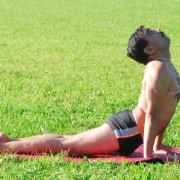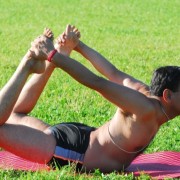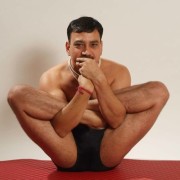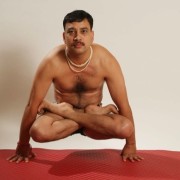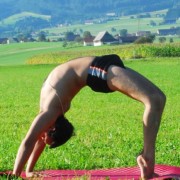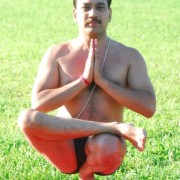What is Yoga?
Yoga is science which treats life holistically and is originated in India five thousands years ago. It is the world´s oldest system of personal development in the world involving the entire body, mind and spirit. It is the union between a person’s own consciousness and the universal consciousness.
The word Yoga derives from the Sanskrit word “yuj” meaning to bind, join, attach and yoke, to direct and concentrate on one’s attention, to use and apply. It means union or communion too.
The ancient Yogis had a profound understanding of man’s essential nature and of what he/she needs in order to live in harmony with himself/herself and his/her environment. They perceived the physical body as a vehicle, with the mind as driver, the soul as man’s true identity, and action, emotion and intelligence as the three forces which pull the body-vehicle. To be wholly integrated, these three forces must be in balance. Considering the interrelationship between body and mind, the Yogis formulated a unique method for maintaining this balance – a method that combines all the movements one needs for physical health with the Breathing and Meditation techniques that ensure peace of mind.
The main aim of Yoga is: The balance of mind, body, and spirit through the three main Yoga structures: Exercise (Asanas), Breathing (Pranayama) and Meditation.
Yoga was founded by Patanjali in his classical work the Yoga Sutras.
Patanjali wrote about the eight limbs or stages of Yoga for the quest of the soul.
They are: Yama (universal moral commandments), Niyama (self-purification by discipline), Asana (posture), Pranayama(rhythmic control of the breath), Pratyahara (withdrawal and emancipation of the mind from the domination of the senses and exterior objects), Dharma (concentration), Dhyana (meditation) and Samadhi (a state of super-consciousness brought about by profound meditation, in which the individual aspirant (sadhaka) becomes one with the object of his meditation – Paramatma or Universal Spirit).
Yama and Niyama helps people to control their passion and emotions and keep people in harmony with nature.
Asanas keep the body healthy and strong and in harmony with nature as well.
Pranayama and Pratyahara teach the aspirant to regulate breathing and to control the mind. Dharana, Dhyana and Samadhi take one into the innermost state of piece of his/her soul. One doesn’t need to search for God outside, he/she knows that God is within, being known as the Antaratma (the Inner Self).
Therefore the practise of Asanas and Pranyamas especially helps us to control body, mind and emotions.
Prateek Mishrapuri is specialised in Yogatherapy and knows how you can keep yourself healthy, relaxed and calm.
